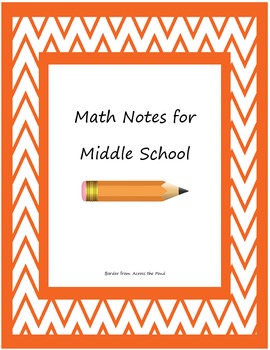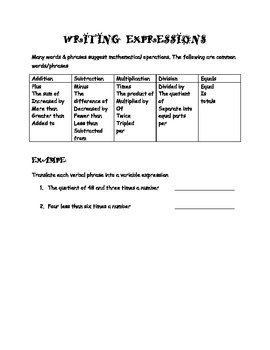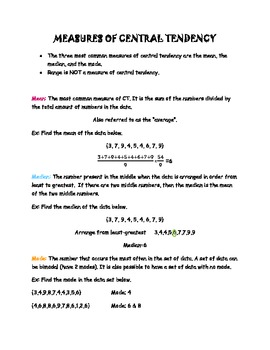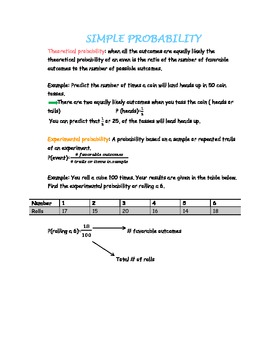Math Notes for Middle School Students
Valerie L
47 Followers
Grade Levels
6th - 8th
Subjects
Standards
CCSS7.G.B.4
CCSS7.SP.A.1
CCSS7.SP.A.2
CCSS6.NS.B.4
CCSS6.NS.C.7a
Formats Included
- PDF
Pages
24 pages
Valerie L
47 Followers
Description
This is a packet of math notes for students in grades 6-8th grade. The topics included are:
order of operations (6th)
writing expressions (6th)
factors and prime factorization (6th)
GCF LCM (6th)
Scientific Notation (8th)
absolute value (6th)
Integer Operation Rules (7th)
Exponents
Measures of Central Tendency (6th)
Coordinate Graphing (6th)
Graphing Inequalities (6th)
Rates and Unit Rates (6th)
Probability (7th & 8th)
Combining like terms (7th)
Circles (7th & 8th)
Surface area/volume (7th)
order of operations (6th)
writing expressions (6th)
factors and prime factorization (6th)
GCF LCM (6th)
Scientific Notation (8th)
absolute value (6th)
Integer Operation Rules (7th)
Exponents
Measures of Central Tendency (6th)
Coordinate Graphing (6th)
Graphing Inequalities (6th)
Rates and Unit Rates (6th)
Probability (7th & 8th)
Combining like terms (7th)
Circles (7th & 8th)
Surface area/volume (7th)
Total Pages
24 pages
Answer Key
N/A
Teaching Duration
N/A
Report this resource to TPT
Reported resources will be reviewed by our team. Report this resource to let us know if this resource violates TPT’s content guidelines.
Standards
to see state-specific standards (only available in the US).
CCSS7.G.B.4
Know the formulas for the area and circumference of a circle and use them to solve problems; give an informal derivation of the relationship between the circumference and area of a circle.
CCSS7.SP.A.1
Understand that statistics can be used to gain information about a population by examining a sample of the population; generalizations about a population from a sample are valid only if the sample is representative of that population. Understand that random sampling tends to produce representative samples and support valid inferences.
CCSS7.SP.A.2
Use data from a random sample to draw inferences about a population with an unknown characteristic of interest. Generate multiple samples (or simulated samples) of the same size to gauge the variation in estimates or predictions. For example, estimate the mean word length in a book by randomly sampling words from the book; predict the winner of a school election based on randomly sampled survey data. Gauge how far off the estimate or prediction might be.
CCSS6.NS.B.4
Find the greatest common factor of two whole numbers less than or equal to 100 and the least common multiple of two whole numbers less than or equal to 12. Use the distributive property to express a sum of two whole numbers 1–100 with a common factor as a multiple of a sum of two whole numbers with no common factor. For example, express 36 + 8 as 4 (9 + 2).
CCSS6.NS.C.7a
Interpret statements of inequality as statements about the relative position of two numbers on a number line diagram. For example, interpret -3 > -7 as a statement that -3 is located to the right of -7 on a number line oriented from left to right.





